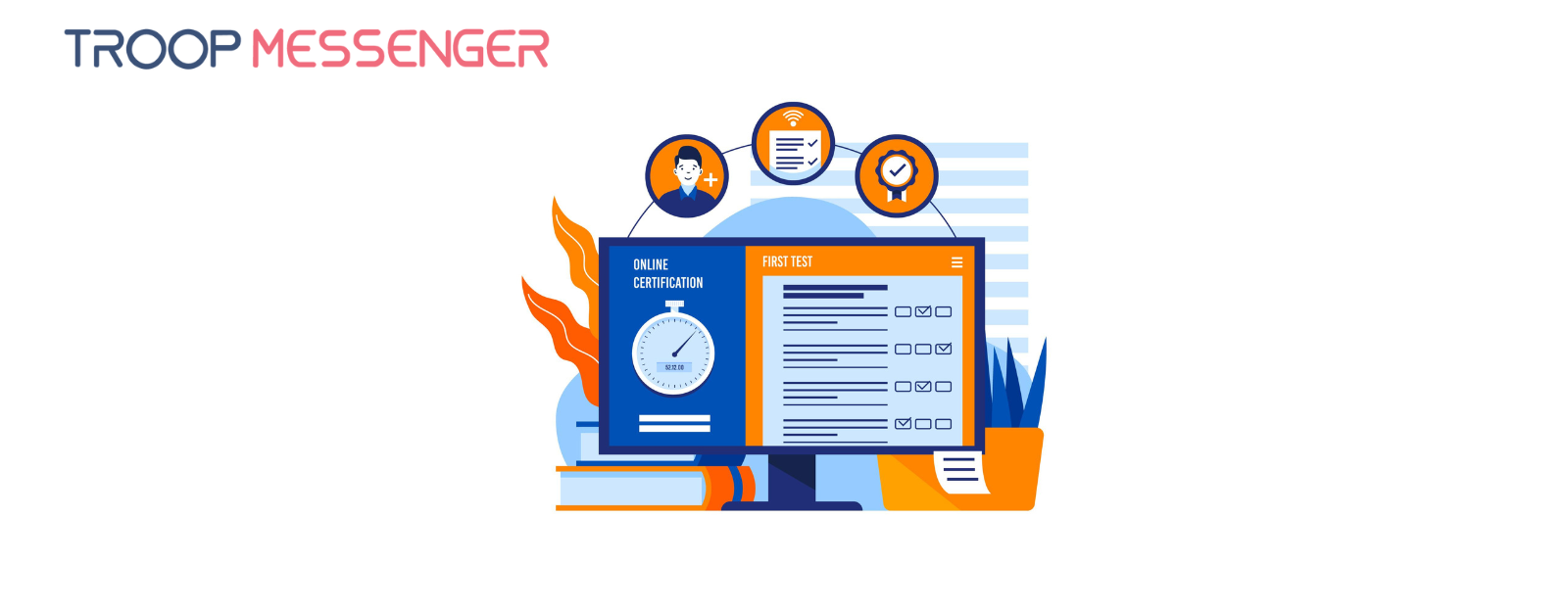Connect with us

Everything You Need To Know About Inclusive Communication in the Workplace
Effective communication lies at the heart of a thriving organization. From one-on-one conversations with co-workers to general announcements and company updates, it’s safe to say that communication keeps the workplace going.
Over time, the dynamics of workplace communication have evolved. Employees from diverse backgrounds want to be recognized and acknowledged. That’s why there’s presently a due emphasis on inclusion in workplace communication. In a survey by McKinsey, 39% of respondents said they refused certain job opportunities because they felt the company wasn’t inclusive. As a business owner or human resource professional, you should not ignore trends like this.
In this article, we’ll delve into the essentials of inclusive communication, answering questions like what is inclusive communication? And, we’ll explore how to promote inclusive communication in the workplace. Ready? Let’s get started!
Table of Contents
What is inclusive communication?
Inclusive communication is all about making sure everyone in the workplace feels heard and valued. It focuses on creating an environment where every employee is welcome regardless of differences in attributes like background, race, or gender. With inclusive communication, you take into consideration different perspectives when interacting with your employees. This helps to foster a culture of respect. Why does it matter?
Well, when team communication is inclusive, it helps to build trust among employees, boost morale, and create a more connected workplace.
Workplace communication doesn’t end with employees though, it also involves communication with customers. A report by Deloitte reveals that companies that embrace inclusive language have 39% higher customer satisfaction.
3 Principles of Inclusive Communication
Now that we’ve answered the question “What is inclusive communication?” we’ll explore three fundamental principles that lay the foundation for better workplace communication and collaboration:
1. Empathy
Inclusive communication begins with empathy. It’s about putting yourself in others’ shoes. You try to understand their feelings, struggles, or unique situations, showing genuine care.
When you approach conversations with empathy, you’ll be able to create a space for open and comfortable dialogue. This way you can foster a sense of belonging for everyone in your company.
2. Culture
It’s not farfetched to find a good blend of cultures in your workplace. Acknowledging and respecting these cultural differences is crucial for inclusive communication. Pay attention to unique language attributes like expressions, intonations, and preferred communication styles.
For example, if your workspace consists of non-native English speakers, consider talking at a slower pace, or using simpler words when passing a message across.
In some cases, you can also infuse cultural experiences or examples into your official communication. Being culturally aware in this manner helps to ensure that everyone can understand and participate in discussions. Sometimes, things like adding pictures of people from different cultures in your content can make a big difference.
3. Empowerment
Empower employees within your workplace to be more inclusive in your communication. Educate them about the value of inclusion and set positive standards that influence how employees communicate with each other.
Provide employee resources like books, guides videos, and other learning materials. You can also incorporate a feedback process that allows employees to contribute their ideas on how to create an inclusive workplace through communication. By doing this you’ll be encouraging employees to be more mindful and considerate of their colleagues.
4 best tactics HR can use to promote inclusive communication
Now, let’s dive into specific best practices for adopting an inclusive communication style in your workplace:
1. Establish a secure space
Create an inclusive environment where employees feel comfortable expressing themselves. Encourage team members to share their thoughts, ideas, and concerns without fear of reprisal. Actively listen to employees when they speak too. That’s how you create a safe space for people to share their needs, opinions, and even concerns with you. Active listening also helps you show your interest in what employees have to say and validate their contributions.
Additionally, you should make room for various modes of communication. Some individuals might feel more comfortable expressing themselves in writing, while others prefer face-to-face discussions. So you can use a combination of emails, instant messaging apps, and video conferencing platforms. Also, use visual aids where necessary to ensure that your content is easy to grasp.
When providing feedback, be sure to do that objectively and constructively. Avoid talking down on employees. This way, you ensure that the communication is focused on improvements rather than criticism.
If you run a corporate social media account, you can showcase how you promote inclusive communication. Transforming Instagram likes and LinkedIn connections into signals of advocacy not only demonstrates your commitment to fostering an inclusive workplace culture— it also serves as a powerful way to attract potential recruits.
2. Highlight inclusive language
Inclusive language consciously avoids discriminatory or exclusive terms when communicating with employees. It goes beyond gender-specific terms and encompasses a broader range of considerations, including race, age, abilities, and more. The aim is to create an environment where everyone feels acknowledged and included.
For instance, you may advise employees to use gender-neutral job titles like "firefighter" instead of "fireman" or "police officer" instead of "policeman." Other examples of inclusive language to highlight include:
- Using inclusive terms like "partner" instead of assuming marital status, or "parents" instead of assuming a nuclear family structure.
- Using "they" when referring to a person whose gender is unknown or unspecified.
- The use of person-first languages, such as "person with a disability" rather than only mentioning specific cases or saying “disabled people “
Highlighting inclusive language in your organization is one way to show that you’re committed to diversity and equality. Using language that considers other identities allows you to create a more welcoming work environment.
Highlighting inclusive language can also help to eliminate potential misunderstandings and ensure that messages resonate with a diverse audience.
3. Set an example for others
Leading by example in general workplace communication entails choosing words carefully and avoiding stereotypes. When sending out things like newsletters and broadcast messages, address the team with a blanket term. For instance, you could say “Hello Everyone” or Hello Team” instead of using exclusionary language like “ Hello guys.”
Whether in team meetings, emails, or casual conversations, inclusive leaders should be mindful of different personal backgrounds. In one-on-one conversations, ensure you interact with individuals based on communication preferences. It’s not a bad idea to ask employees how they would like to be addressed. This can serve as a pointer for how these employees ought to interact with others.
Overall, demonstrating inclusive team communication as a leader can help create a positive ripple effect throughout your organization.
4. Understand your target audience
Recognizing the diversity within the employee population is key to crafting messages that resonate with everyone. Consider the unique characteristics of different work environments and roles within your organization.
Tailor your communication to address the specific needs and challenges faced by various departments or teams. This demonstrates an understanding of the distinct dynamics at play across the company.
Paying attention to the minority population is equally vital. For example, if you’re a tech company, don’t assume that everyone understands technical terms, consider other non-engineering staff like marketers or customer service representatives. This means that you should try to simplify terms in your messages.
So, instead of using terms like AI SEO which may not be universally understood, you can say something like “artificial intelligence in search engine optimization.” Doing this will help to promote a shared understanding across diverse roles. This can in turn foster a more collaborative workplace culture.
Overall, embracing a holistic approach to communication is one way to show that you value and recognize every group represented in your organization.
Examples of Inclusive Communication
As we progress towards the end of this discussion, let’s see some examples of how various companies have started to apply inclusive communication.
1. Zapier
Zapier has proactively focused on enhancing inclusive language and communication within its workplace culture. A notable example is their shift from using gender-specific terms like “Hi guys” to a more inclusive and collective address of “Hi, people of Zapier” when communicating with employees as a group.
2. Netflix
Netflix is big on creating a safe and inclusive safe as an organization, especially for new employees. Netflix has an inclusion training program team. This team is responsible for creating curriculums that educate recruiters about how to be more inclusive in the hiring process.
Netflix also puts together a workshop for new and existing employees. The sole purpose of this is to enlighten them about inclusive concepts and languages, helping employees to develop more consciousness about inclusion.
3. Okta
Okta is another organization that has taken proactive steps to implement inclusive communication within its workplace culture. First, they’ve introduced inclusive language training for all new Engineering hires, emphasizing the importance of inclusive language and providing practical guidelines.
Additionally, Okta’s Diversity, Inclusion, and Belonging team conducts Precise Language Workshops. These workshops focus on encouraging a learning mindset and removing biases in everyday language, especially when it comes to internal communication.
Conclusion
Using inclusive communication in the workplace is one way to ensure a safe and welcoming environment for all your employees.
As seen in this article, fostering inclusive communication in the workplace involves embracing three fundamental principles: empathy, recognizing and respecting diverse cultures, and empowering individuals.
To adopt inclusive communication practices, consider the following four best practices: establish secure spaces that encourage open dialogue and set an example for others through consistent and respectful communication. Also, understand and tailor your communication to the diverse needs of your employee audience. Finally, highlight the importance of inclusive language.
Now, you can put these tips to work, taking a cue from examples like Zapier, Netflix, and Okta which we explored today. By doing these, you’ll be able to foster a more inclusive and harmonious work environment. Good luck!








